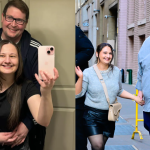
Cameras have the ability to showcase a moment with a flash or reveal part of someone’s story with a single frame.
They say a picture is worth a thousand words, but what happens to the words and stories of darker-skinned people when these pictures are systematically favoured towards people with lighter skin?
Throughout history, eurocentric beauty standards have been favoured by the technology of cameras we use every day, with automated colour correction and exposure control designed for white skin. When cameras aren’t able to correctly depict diverse skin tones, photographs of these people, and their stories, fall by the wayside.
When film photography was first able to be developed with colour, a “Shirley” card was introduced, which was an image of a white woman with brunette hair. The card acted as a measure of how images were to be developed, used by technicians to balance exposure, colours, and hues. As the card was developed using light skin as the benchmark, darker skin tones were not rendered accurately in photography. It wasn’t until the ’60s and ’70s where research began into how to correctly depict darker tones. Professor Lorna Roth from Concordia University found that this wasn’t because of the need for dark skin to be represented authentically, but instead because furniture companies and chocolate manufacturers weren’t getting the right browns to advertise their products.
In the ’90s, this card was updated to include a Latina, Asian and Black woman to help people in the photography industry correctly balance different skin tones. However, with digital photography on the rise, earlier iterations of colour correction technology in film remained the benchmark, leaving people of colour inaccurately represented in digital photography.
This led to an extended period of inauthentic representations of Black and Brown people, and subsequently, minimised the chance for people with darker skin to be truly seen. ‘If you can see it, you can be it’ begins to lose its power when people with darker skin aren’t being reflected correctly in the media they consume every day.
While people developing camera technology may have held racial bias in the past, recently we have seen progress in the commitment to truly and authentically represent all skin tones accurately. Representing an important moment of progress in front of and behind the camera, In 2018, photographer Tyler Mitchell became the first Black person to photograph the cover of VOGUE, chosen specifically by cover star Beyonce.
This year, Google enlisted a team of image experts to help develop Real Tone in their new Google Pixel 6 camera, resulting in images that more accurately reflect all skin tones. Through improvements in face detection and auto-white balance, the camera technology allows anyone to authentically photograph the world around them. What they’ve created has been voted the World’s Most Inclusive Camera*
With improvements in camera technology and greater representation of POC and ATSI in influential creative roles, we’re seeing a step in the right direction for an equitable playing ground for all people.








